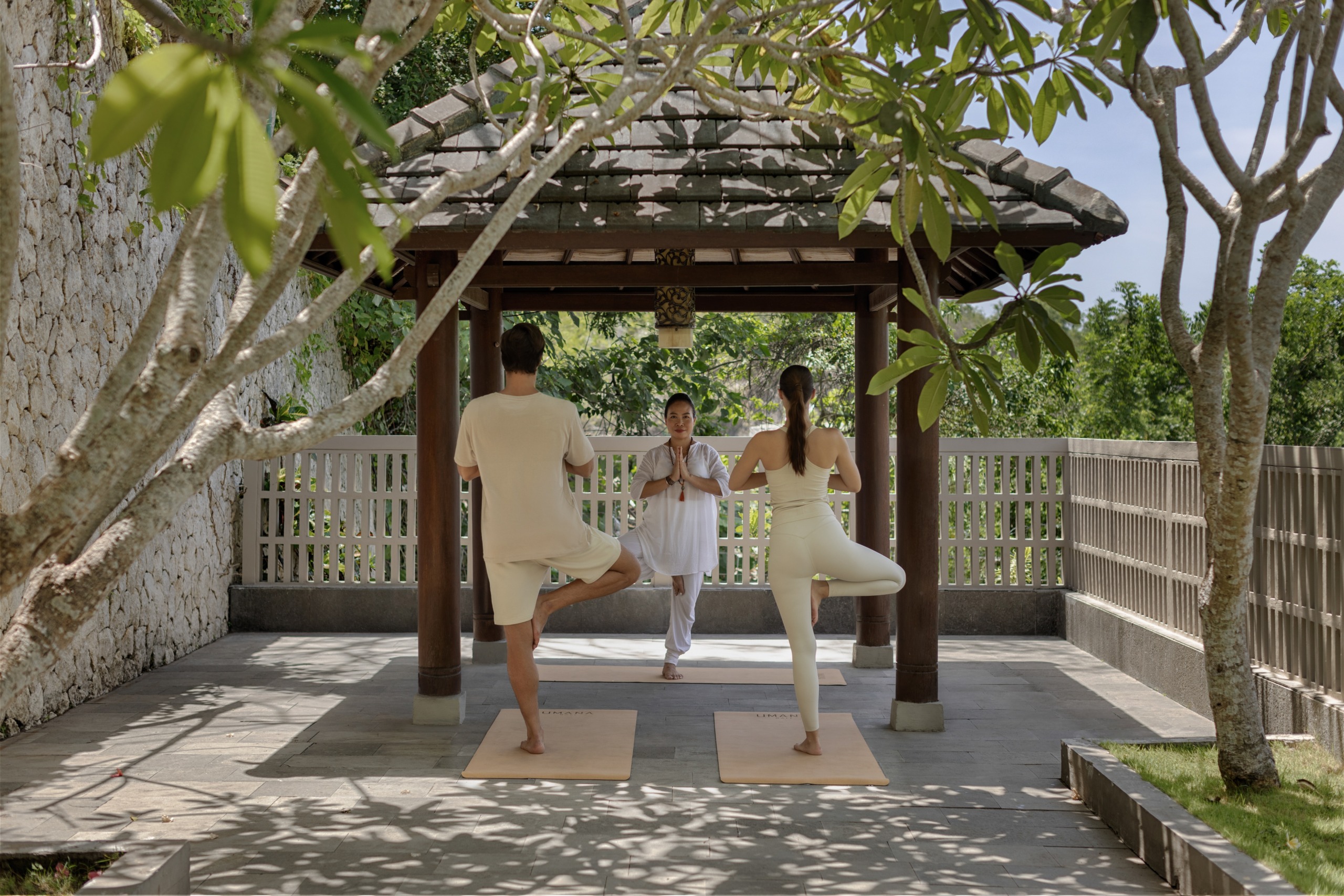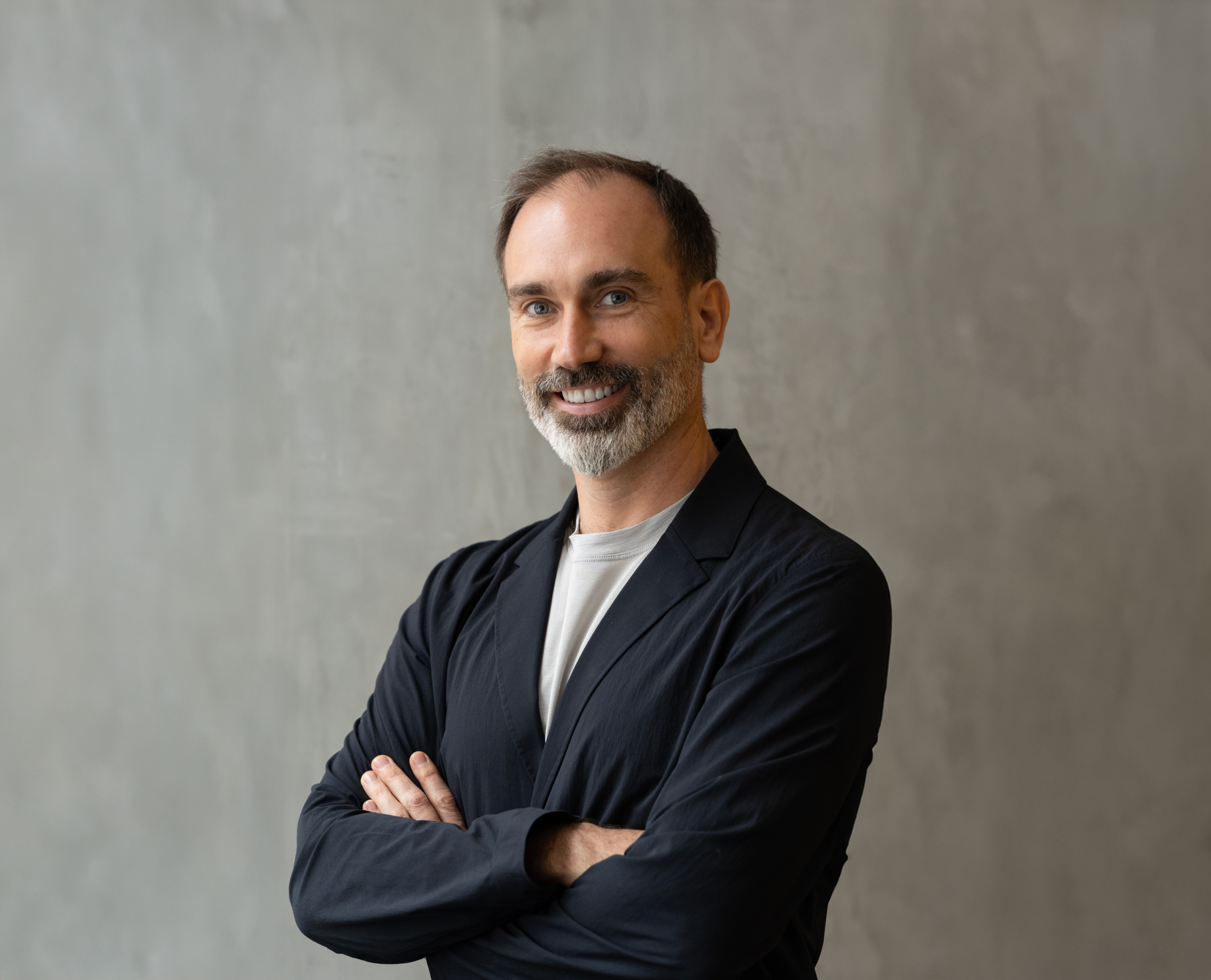The Feel-Good Effect: Designing Landscapes that Heal, Habitually
By Toby Kyle
September 11, 2025
The global wellness industry has experienced remarkable growth in recent years. According to Global Wellness Institute, the industry was valued at approximately $6.3 trillion in 2023, accounting for about 6% of the global GDP. This is projected to reach $9.0 trillion by 2028 – indicating an annual growth rate of 7.3%, notably outpacing the projected global GDP growth of 4.8%.
$6.3tn
Global wellness industry value in 2023
6%
Accounting for global GDP in 2023
$9tn
Expected global wellness industry growth by 2028
7.3%
Annual growth rate by 2028
The Cost of Being Unwell
Behind this exponential growth lies a sobering truth. The wellness industry is expanding not only because people want to thrive — but also because many are struggling. As the world quickly distances itself from the difficult years of post-pandemic in an attempt to resume a sense of normalcy, it is a poignant moment to reflect on the impact and cost of being unwell.
Around the world, mental health challenges and cardiovascular diseases (CVD) are exerting significant economic and social pressures. According to World Health Organization, depression and anxiety alone cost the global economy over $1 trillion annually in lost productivity. In Singapore, a 2023 study by Duke-NUS Medical School and the Institute of Mental Health estimated that anxiety and depression cost the nation nearly S$16 billion annually, approximately 2.9% of its GDP. Similarly, cardiovascular diseases remain a leading cause of death, accounting for 31% of all deaths in 2022.
$1tn
Estimated depression and anxiety cost to the global economy annually
S$16bn
Estimated anxiety and depression cost in Singapore in 2023
2.9%
Percentage of cost to GDP
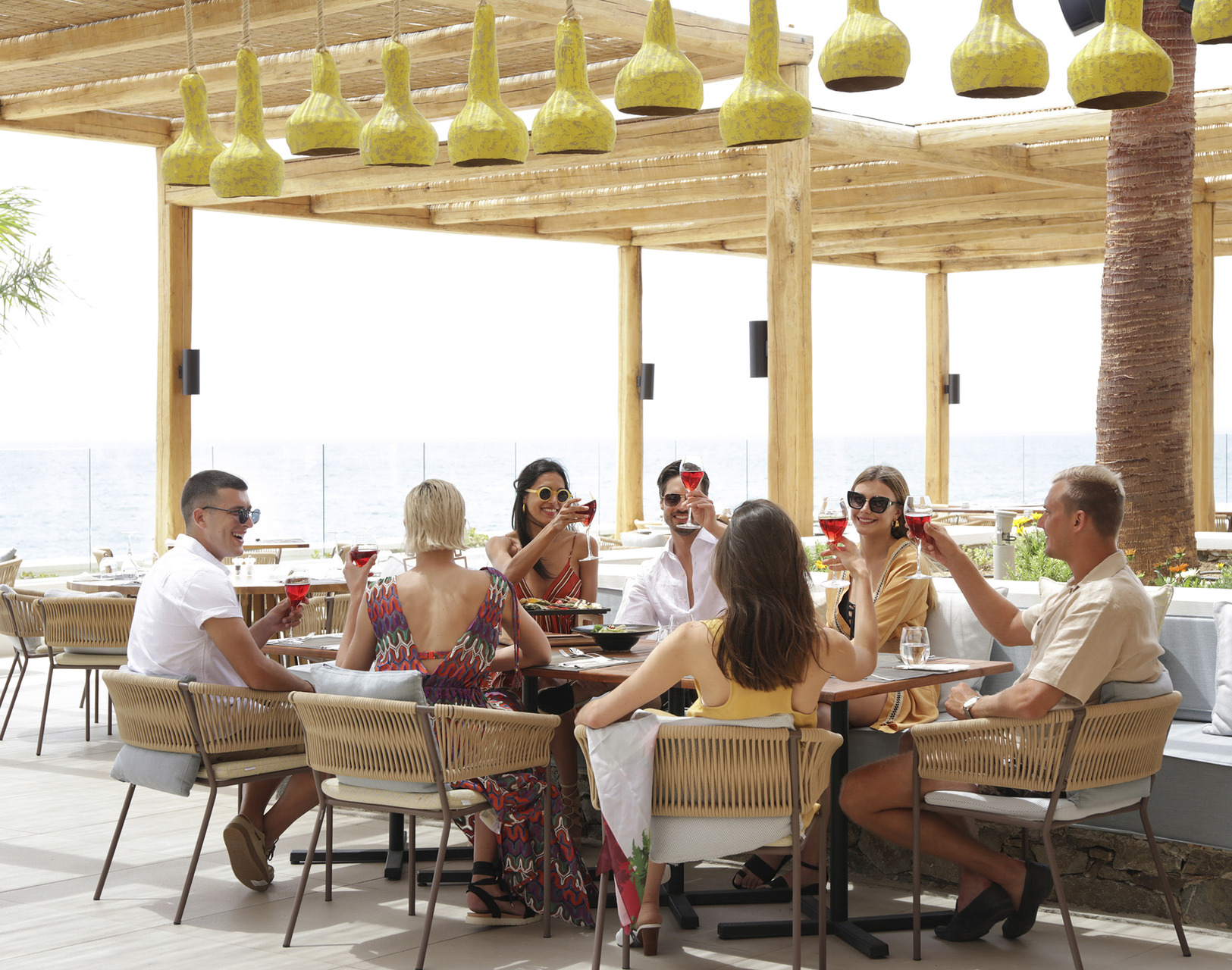
Alfresco dining at Mitsis Norida Beach
Why Are We So Unwell?
Illness has been designed into our daily lives. From sedentary jobs and long commutes to overly processed food and overstimulating digital environments, many modern systems are unintentionally engineered against our biological needs. The environments we inhabit — especially in cities — often limit access to daylight, greenery, fresh air, and opportunities for movement, all of which are foundational to health. Social infrastructure — like parks, plazas, and public gathering spaces — has been neglected in many urban developments, reducing opportunities for community and connection, resulting in the loneliness epidemic even when we’re more connected today than ever. In fact, loneliness increases the risk of premature death by up to 30% — a mortality impact equivalent to smoking 15 cigarettes a day.
As a remedy to our ‘unwell’ built environment, healthcare is evolving from a reactive model — waiting until symptoms emerge — to a proactive approach focused on preventing injury and disease before they occur. Fast becoming the backbone of modern medicine, preventive healthcare is enhanced by technology, supported by economic incentives, and driven by patient empowerment. This shift moves care from simply reacting to illness to actively anticipating and avoiding it. The benefits are clear: healthier individuals, more resilient healthcare systems, and a future where wellness becomes the norm.
Wellness is the active pursuit of activities and lifestyles that lead to holistic health, so that instead of just surviving, you’re thriving.
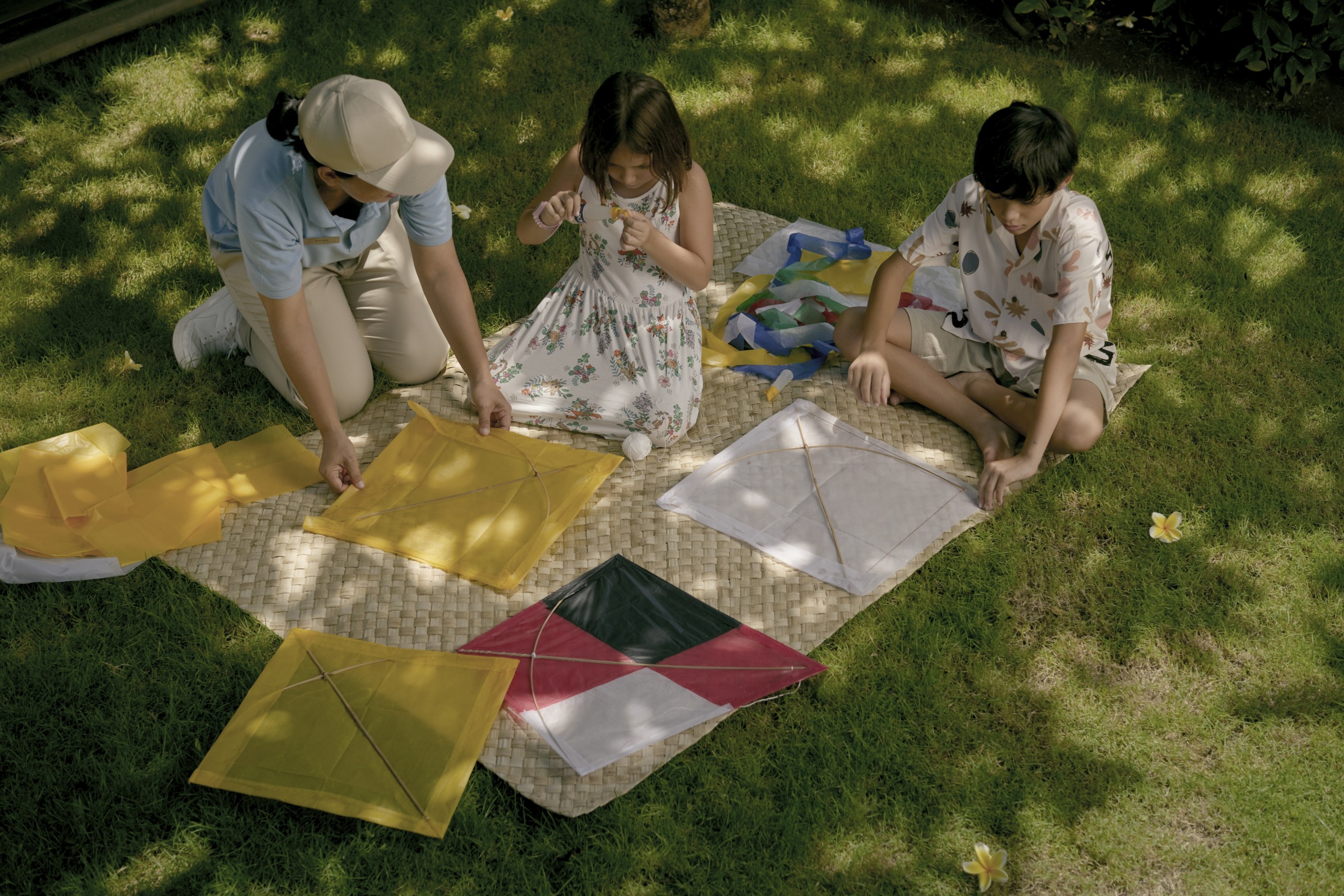
Kids’ activities at Umana Bali, LXR
Wellness as a Way of Life: An Active Pursuit
Wellness — as defined by the Global Wellness Institute — is the active pursuit of activities and lifestyles that lead to holistic health. Pfizer defines wellness as the act of practicing healthy habits on a daily basis to attain better physical and mental health outcomes, so that instead of just surviving, you’re thriving.
Six dimensions are identified in a McKinsey & Company research as key focus areas of consumer wellbeing. These are segmented into two broad categories of products and services. Products currently make up the larger market share. However, the services sector, including wellness tourism, spas, and mental health services, is experiencing significant growth and is expected to continue expanding in the coming years.
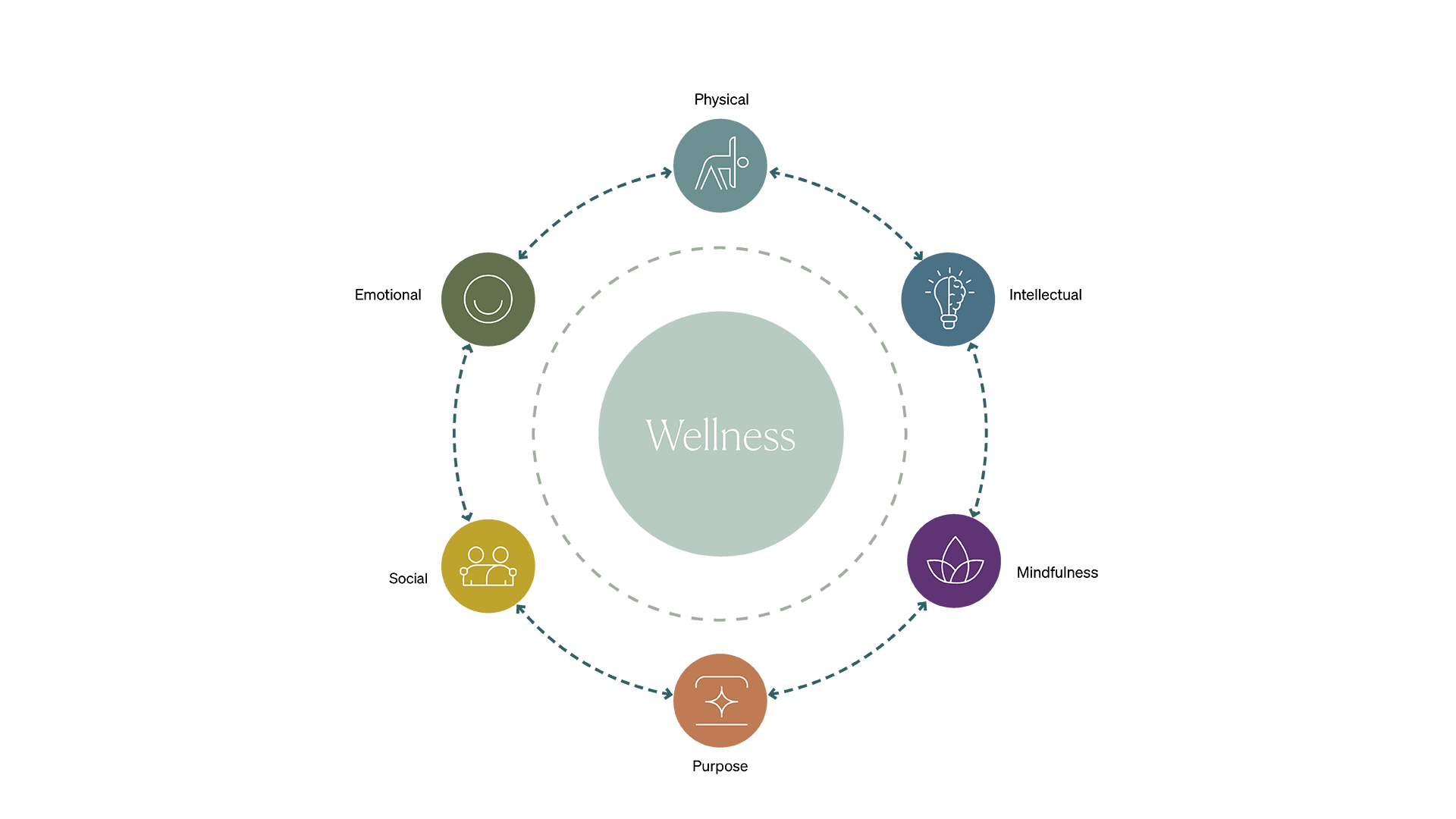
Wellness as a Way of Life: An Active Pursuit
The definition and offerings of health and wellness are also rapidly evolving and expanding. Younger generations are placing greater emphasis on wellness, dedicating a disproportionate share of their spending towards it. For millennials and Gen Z, wellness is no longer viewed as a series of occasional activities or purchases; it has become a daily, personalized practice — shifting from episodic experiences to continuous, integrated routines grounded in evidence and supported by technology.
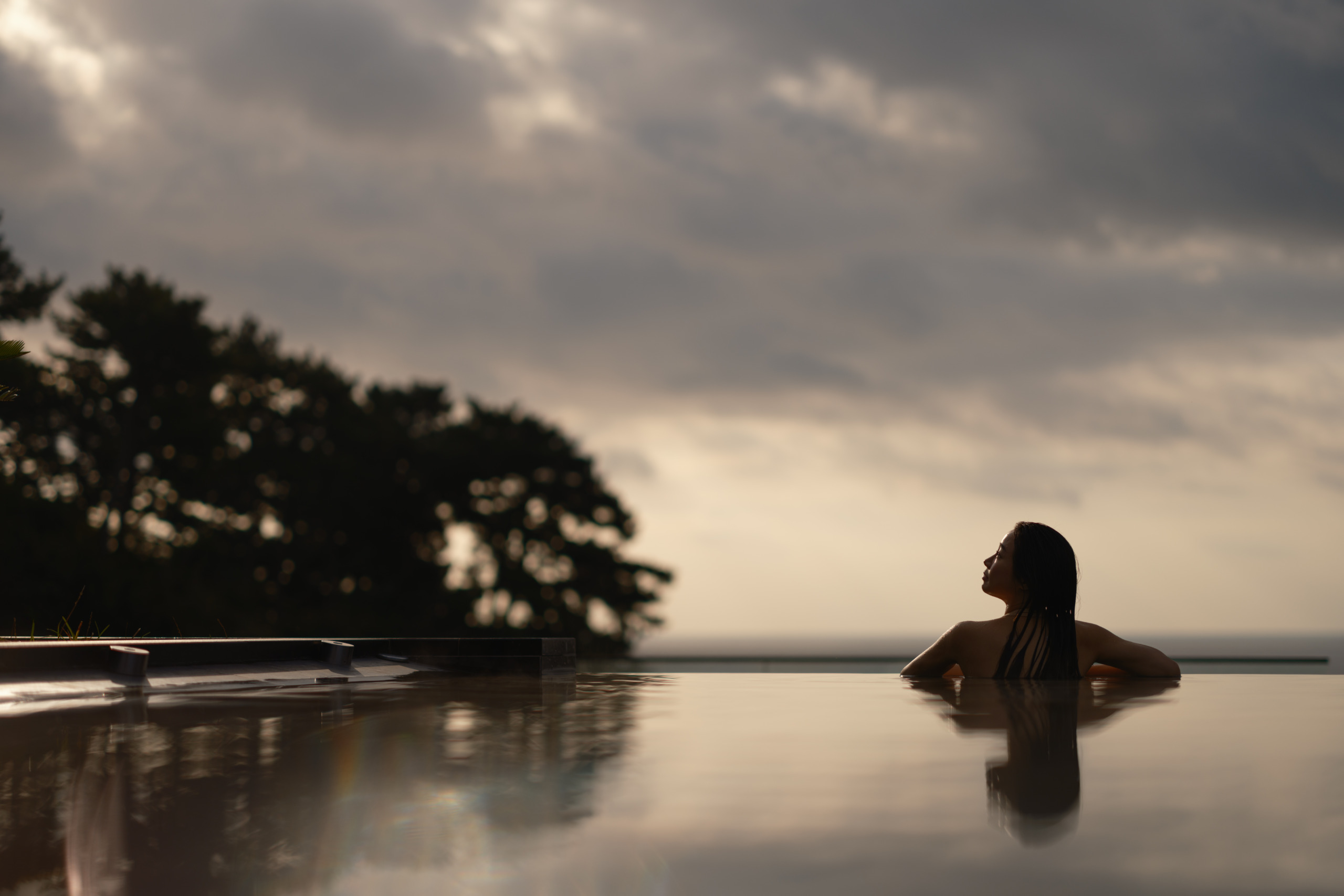
JW Marriott Jeju Resort & Spa, Architecture by WATG
Wellness Real Estate
While wellness was once viewed primarily as a consumer-driven market, the pandemic accelerated growth in public health, prevention, and personalized medicine, which now accounts for 12.4% of all wellness spending. Notably, wellness real estate has emerged as a growth leader before, during, and after the pandemic, as both consumers and the building industry increasingly recognize the profound impact that external environments have on physical and mental health. This underscores a vital truth: our surroundings are not just aesthetic backdrops but powerful tools in preventive healthcare — and landscape design plays a major role in shaping environments that keep us well.
Through our landscape design lens at WATG, we focus on creating environments that passively promote health — spaces where we ‘feel good’ while naturally ‘doing good’ for ourselves. In this way, self-care becomes part of our daily rituals. When wellness is seamlessly embedded into our routines and surroundings, it becomes second nature.
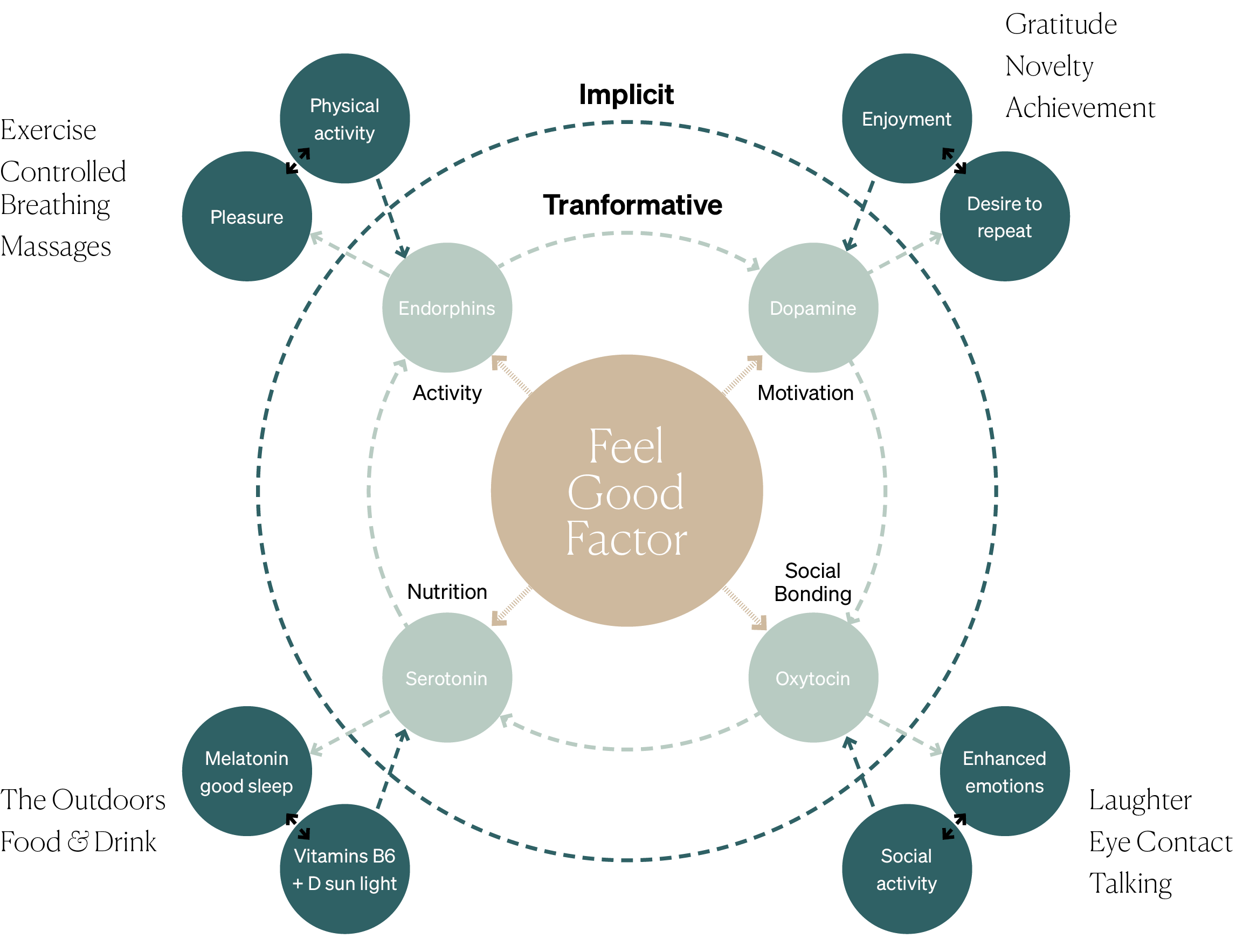
The Neurochemical Basis of 'Feeling Good'
Our sense of well-being is deeply rooted in neurochemistry. Four key neurotransmitters—endorphins, dopamine, oxytocin, and serotonin—play pivotal roles:
- Endorphins: Released during physical activity, they act as natural painkillers and mood enhancers.
- Dopamine: Associated with pleasure and reward, it’s triggered by novel and enjoyable experiences.
- Oxytocin: Often termed the ‘love hormone,’ it’s linked to social bonding, sense of community, belonging and trust.
- Serotonin: Regulates mood, appetite, and sleep; its production is influenced by exposure to sunlight and nature.
By understanding these chemicals, we can craft spaces that naturally stimulate their release, creating environments where individuals ‘feel good’ effortlessly by way of design, thus maximize the landscape’s potential to support wellness and long-term wellbeing.
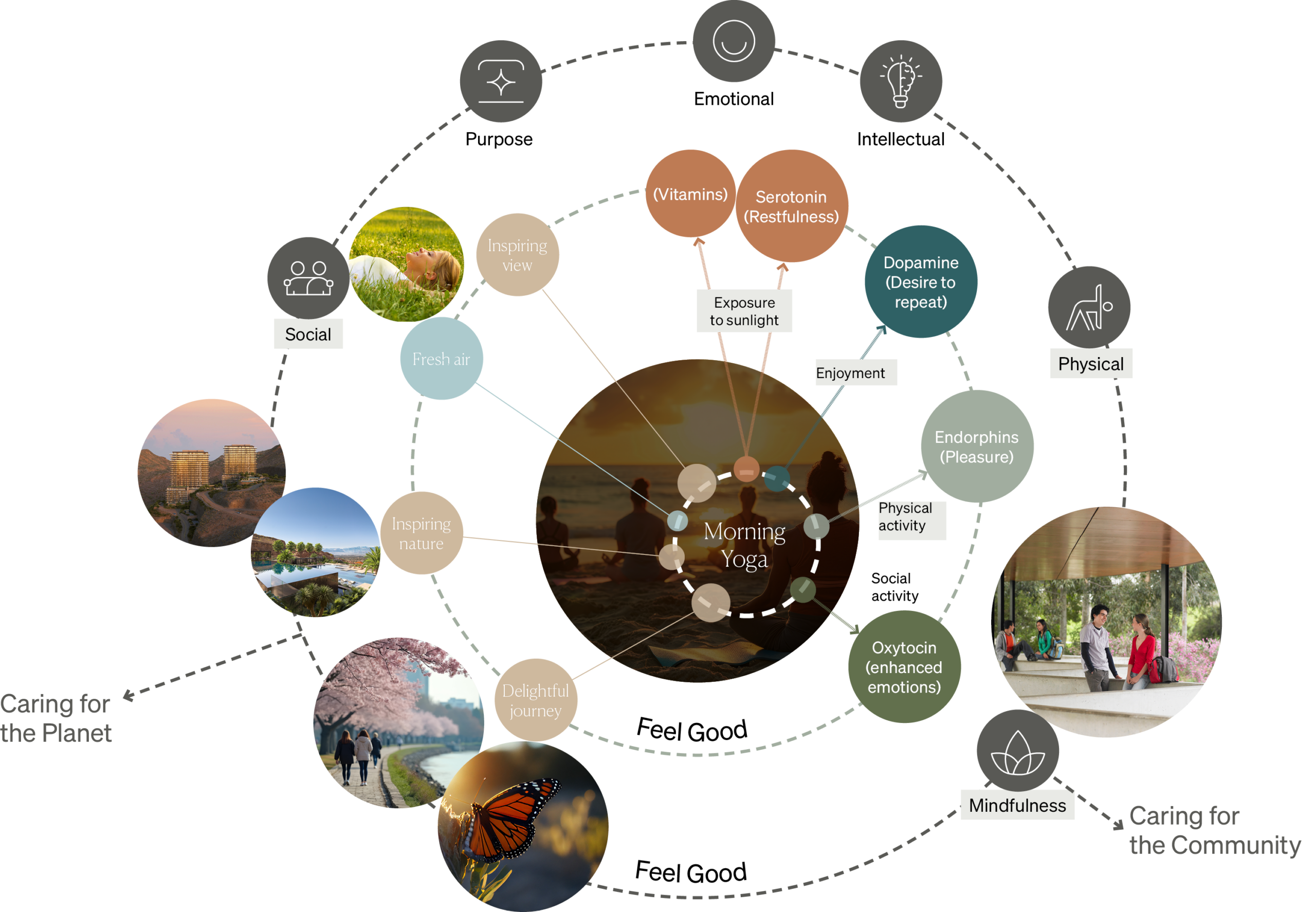
Designing for Wellness Through Neurochemistry
Here are some of the design principles we prescribe by — each thoughtfully curated to promote the natural release of neurochemicals that underpin wellbeing:
- Emotional – Sensory layers that reach beyond simple aesthetics to enrich all senses
- Physical – Curating delightful journeys, that promote active mobility
- Social – Meaningfully programmed and climatically comfortable outdoor social spaces
- Intellectual – Moments of surprise and wonder encourage creative thought and deeper enquiry
- Purpose – Naturally thoughtful and culturally sensitive design bringing deeper meaning to experiences
- Mindfulness – Spaces for contemplation and inspiration, for relaxing mind and body

Foraging experiences at Rissai Valley, a Ritz-Carlton Reserve
The wellness sector is growing faster than many others, demonstrating resilience in an unpredictable world. Designing with wellbeing in mind delivers measurable benefits — economic, environmental, and human. A truly wellness-focused development is holistic, integrated, and begins at the masterplan level.
Economic Resilience
Wellness is outpacing many sectors, proving its long-term value and stability.
Design for Wellbeing
Spaces that prioritize human wellbeing generate clear economic returns.
Sustainability & Wellness
Human health and planetary health are interdependent — one cannot thrive without the other.
Holistic Design Approach
True wellness environments connect interiors and exteriors into seamless, immersive experiences. Wellness is a journey, not a moment.
Nature & Landscape Value
Time in nature has measurable health benefits, underscoring the importance of nature-based design and thoughtful landscapes.
Wellness from Masterplan to Plate
Wellness must be embedded from the earliest planning stages and carried through every detail — from movement through a space to the food served.
Human-Centered Experience
While data supports strategy, wellness is deeply personal and intangible. Good design enables meaningful engagement, while embracing spontaneity and chance.
Unified Design Teams
Holistic wellness is best achieved through cross-disciplinary collaboration and a shared vision across the design team.
Applications
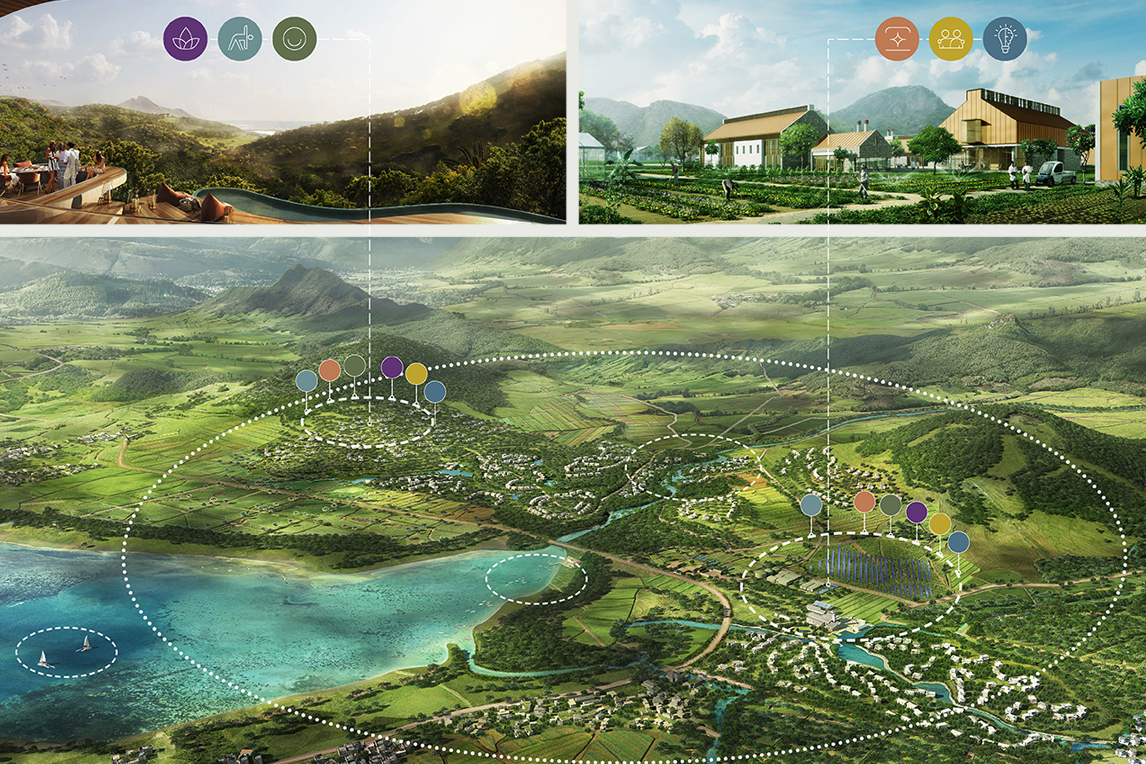
The design vision was to establish the ‘must-see’ nature-based destination, using the endemic nature as the key driver in creating and preserving a legacy for Mauritius – a place that will allow residents, guests and visitors the opportunity to immerse themselves in an authentic, natural Mauritian landscape and experience. An agricultural evolution from historic sugar cane monoculture into a more diverse and sustainable productive landscape and reforestation program.
+ Integrated mobility planning encourages active movement around the estate.
+ A regenerative approach to the estate brings new opportunities for job creation and a purposeful community hub.
+ Immersed in the rejuvenated natural setting, residences offer strong connections with nature.
+ Hillside residences overlook the estate and ocean beyond, providing a relaxed living environment.
+ Community farms bring food production together with retail, dining and social activity.
+ Meaningful conversions of existing estate farm buildings create spaces for living memory.
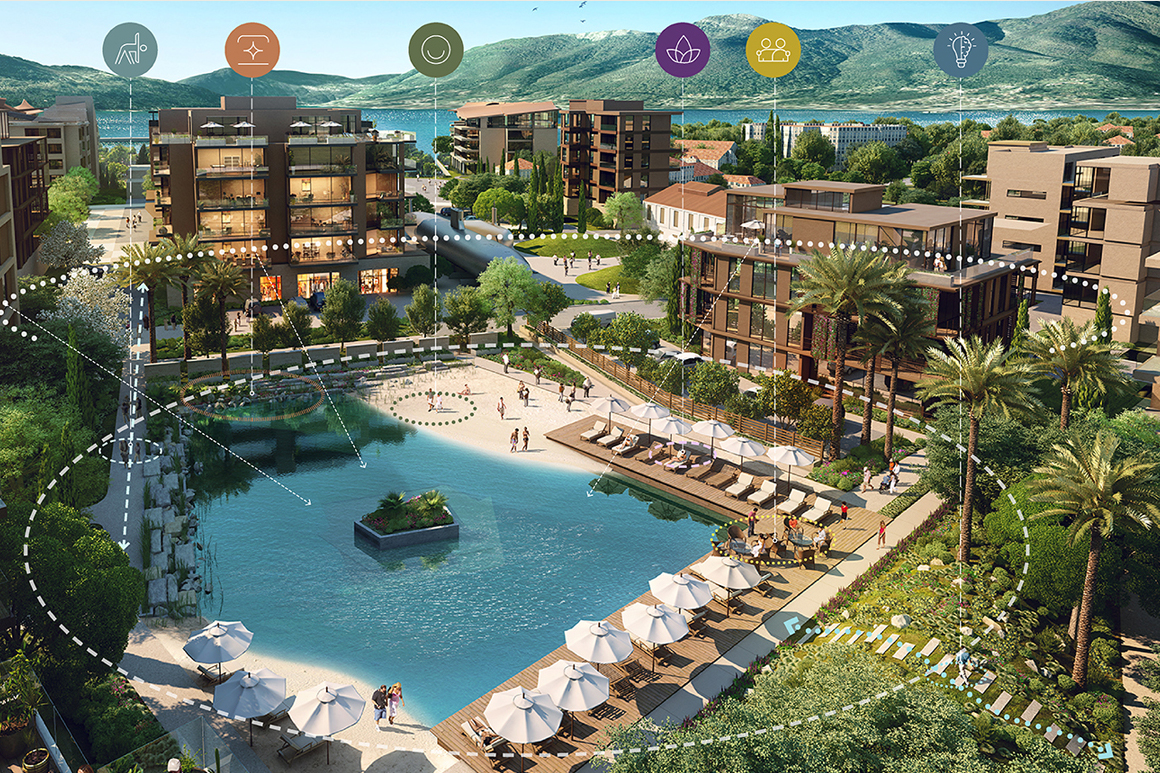
By introducing a new water body with urban beach and natural filtration system, value was added to areas within a masterplan that didn’t benefit from mountain views. The ‘Urban Beach’ provides a biophilic, public space that ingrains layers of wellness into the development, helping to uplift the surrounding property value.
+ Enjoyable pedestrian pathways connect public space to encourage active mobility and the release of endorphins.
+ Natural filtration and aquatic planting add biodiversity, providing a purposeful landscape that enriches the experience.
+ The Urban Beach supports barefoot play, encourages natural bathing and stimulating the senses.
+ Resort loungers and decks create a relaxed environment and promote contemplative outdoor spaces.
+ Varied furniture options establish opportunities for social gatherings and promoting oxytocin release.
+ Informal pathways through planted areas bring a sense of discovery and natural wonder to urban areas.
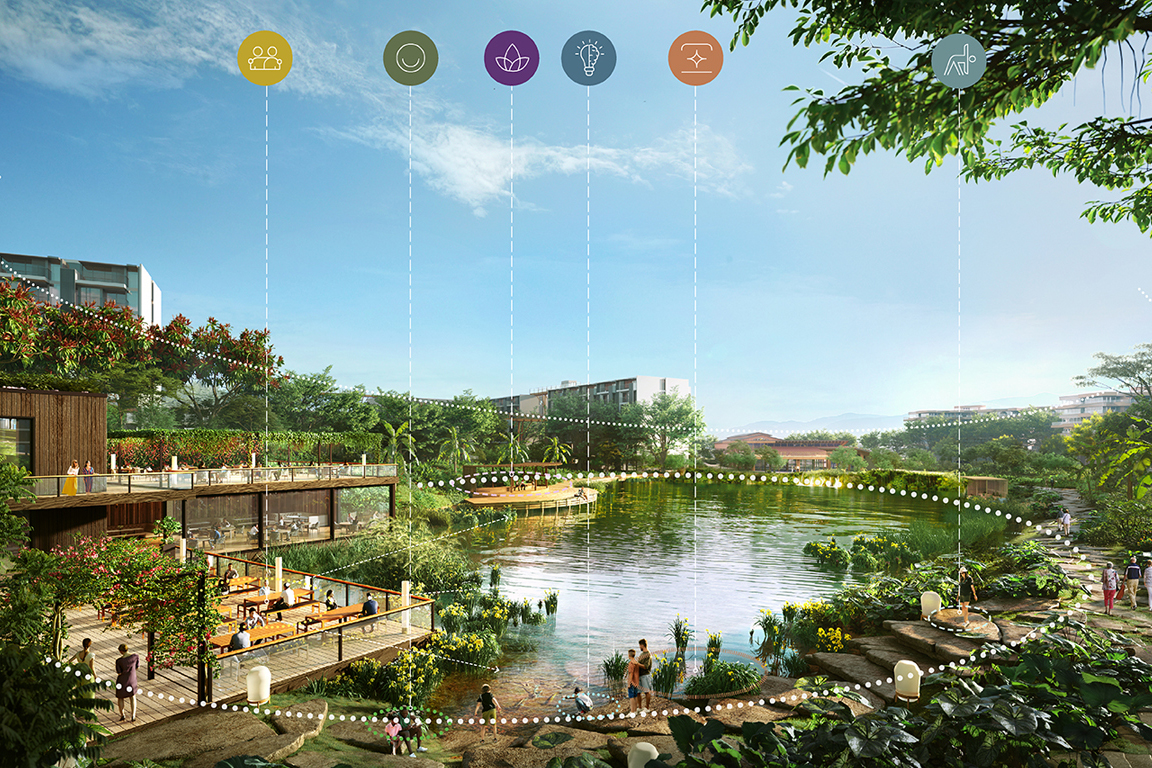
Planning around and conserving an existing water body allowed nature to permeate into the heart of a new residential development. Careful positioning of buildings and built structures are combined with curated pathways to connect with the natural assets in meaningful ways.
+ A range of pathways provide residences with enjoyable ways to access amenities encouraging active mobility.
+ Natural filtration and aquatic planting add biodiversity, providing a purposeful landscape that enriches the experience.
+ Rich natural textures within the landscape break from the typical hardness of urban environments and enliven the senses.
+ Water edge decks create a relaxed environment and promote contemplative outdoor spaces.
+ Varied alfresco dining furniture options establish opportunities for different social gatherings with the benefits of serotonin.
+ Informal pathways through planted areas bring a sense of discovery and natural wonder to urban areas.
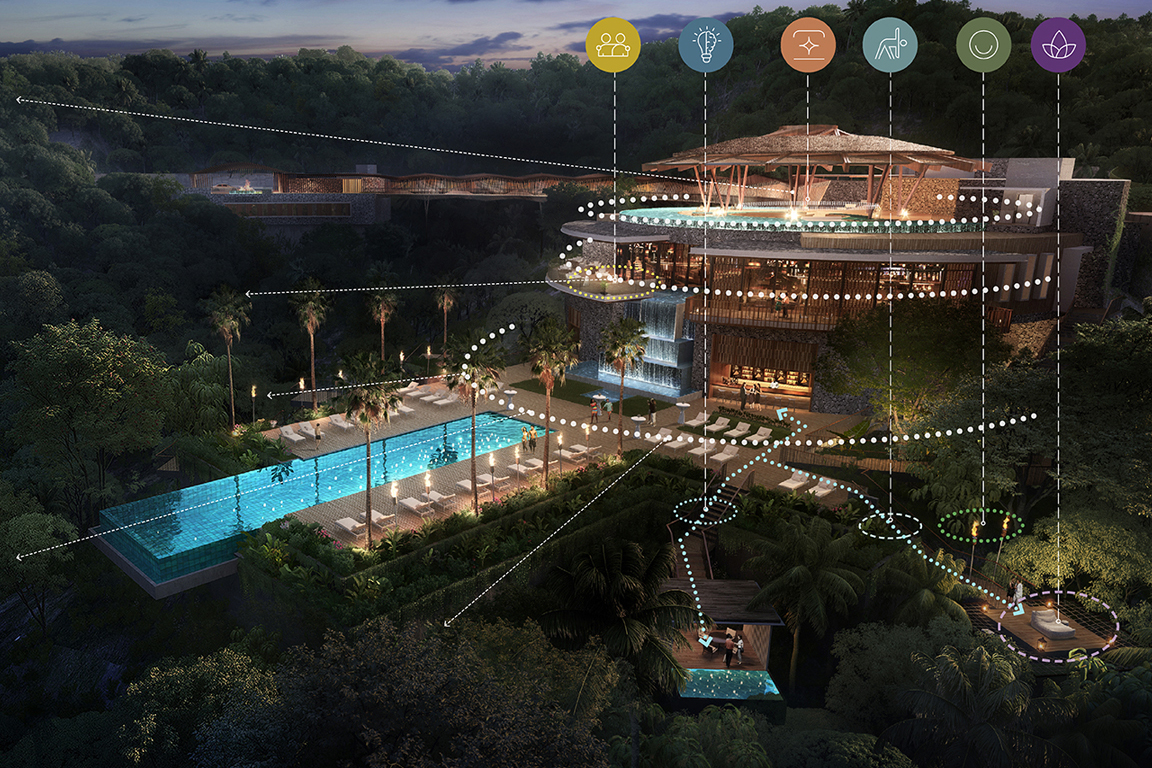
Working sensitively with steep topography allows the built forms to have a range of relationships with the forest layers. High level views connect arriving guests with the forest canopy and volcanic mountains beyond, whilst lower levels benefit from the shade of the canopy and more intimate relationship with the forest understories.
+ Engaging and shaded pathways encourage pedestrian mobility around the resort.
+ ‘Wow’ moments celebrate vernacular inspired architecture and environmental context raising dopamine levels.
+ Fire elements provide a soft, natural light effect that create a cozy feeling and helps relax the senses.
+ Carefully considered decks provide spaces immersed in the forest and a retreat for contemplation.
+ Alfresco dining spaces encourage mealtime social activity with the associated benefits of serotonin.
+ Meandering pathways lead guests through the forest providing moments of inspiration and wonder.
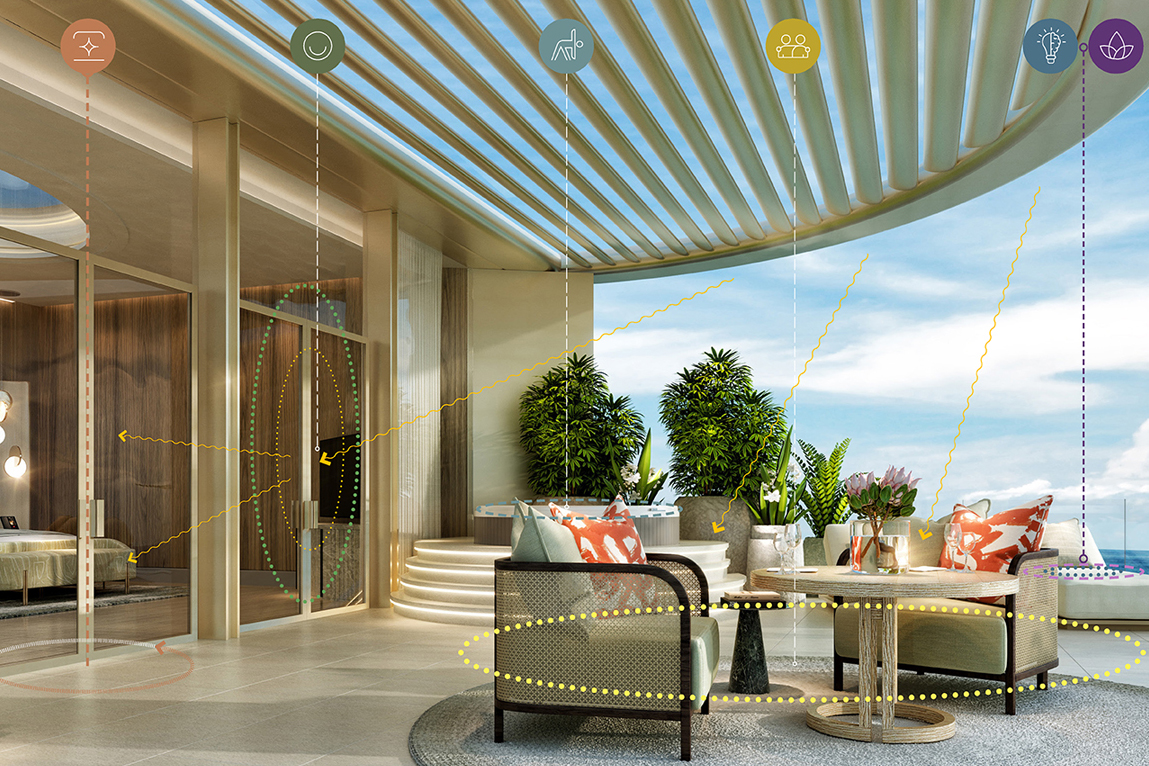
As part of the high-rise luxury offering, the sky gardens feature stunning uninterrupted views over the marina and ocean. A central tenet of the design brief revolved around ensuring the utmost privacy for guests and residents. A combined design team approach conceived a serene private haven for residents.
+ Jacuzzi, hot-tub or ice-bath set on the terrace provides for luxurious relaxation and physical recovery.
+ Considered material selections create seamless spatial transitions, help manage micro-climates, reduce surface glare, promote clean air and stimulate the senses.
+ Architectural shading provides privacy and climate comfort for outdoor space, whilst allowing daylight into rooms.
+ Well-proportioned sky terraces provide outdoor dining and social space in a high-rise environment.
+ Carefully arranged and selected furniture provide inviting places for relaxation, reading and reflection – places to daydream and refresh the mind.
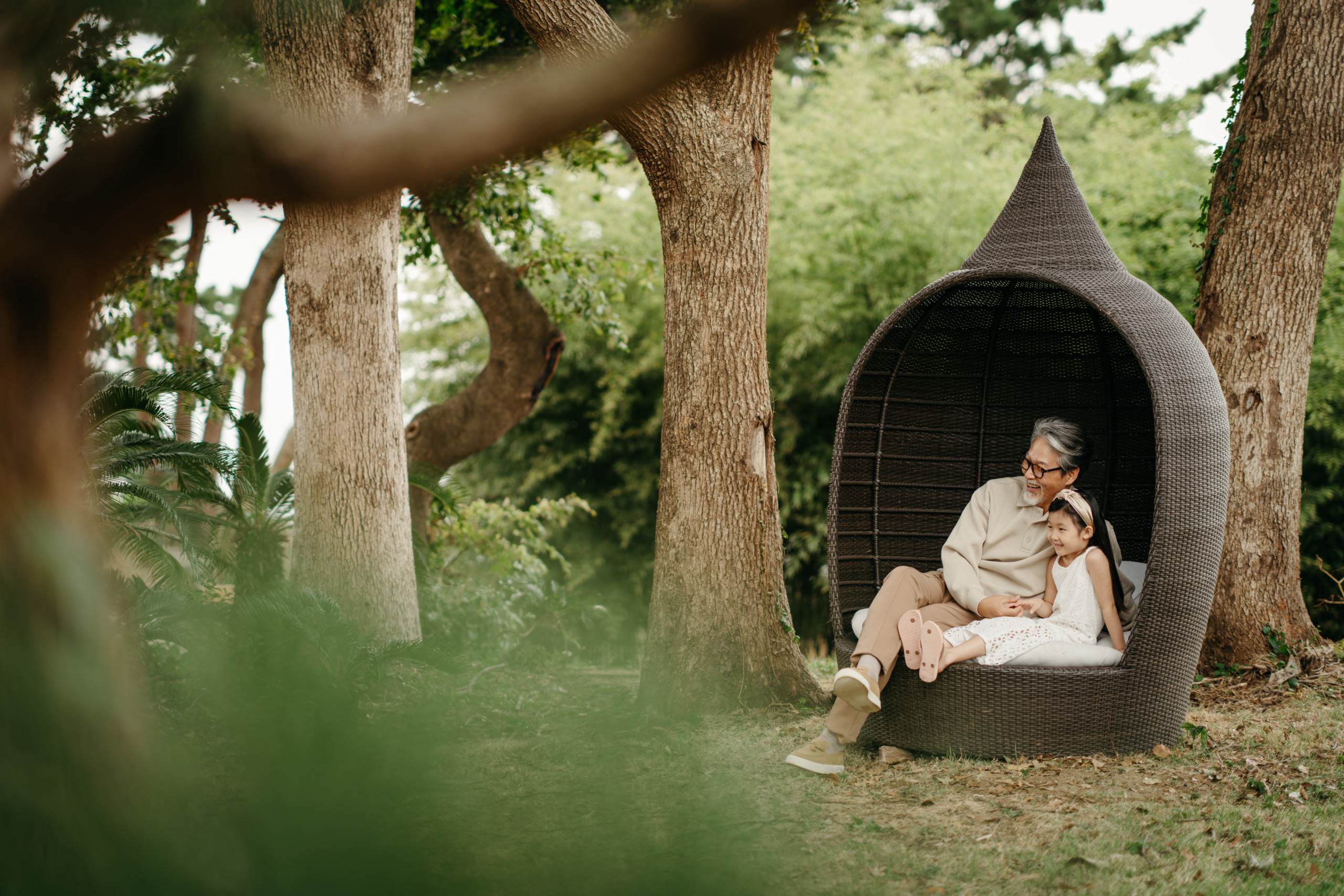
Immersive experiences in nature for multigeneration at JW Marriott Jeju Resort & Spa
The wellness journey is one through feelings. Feel grounded by nature, uplifted by light, and nourished in every sense.
Wellness Journey
Imagine a journey not through places, but through feelings. Begin with the calm of arrival — a deep breath, a sense of space. Move through curiosity, delight, and quiet connection as each element invites you to slow down and be present. Feel grounded by nature, uplifted by light, and nourished in every sense. This is more than design — it’s an emotional experience that unfolds gently, moment by moment.
(Photos courtesy of respective resorts)
Toby Kyle
Toby Kyle, Associate Principal, Studio Director of Landscape, is an accomplished design leader with over 20 years of experience in master planning, architecture, and landscape design. Specializing in tourism and hospitality, he has led and collaborated with international design teams in a variety of projects from conception to completion. His work integrates environmental and cultural sensitivity, ensuring that each project fosters a deep connection with its surroundings.
Latest Insights
Perspectives, trends, news.
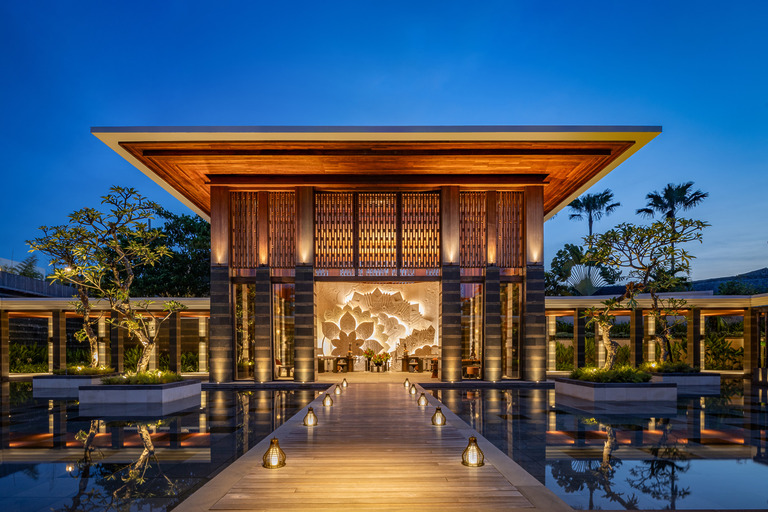
- News
2025: A Year in Review

- News
2025: A Year in Review

- Strategy & Research |
- Design Thinking & Innovation
The Architect of the Future

- Strategy & Research |
- Design Thinking & Innovation
The Architect of the Future

- News
WATG Leads Landmark Initiative to Shape the Future of the Giza Pyramids

- News
WATG Leads Landmark Initiative to Shape the Future of the Giza Pyramids
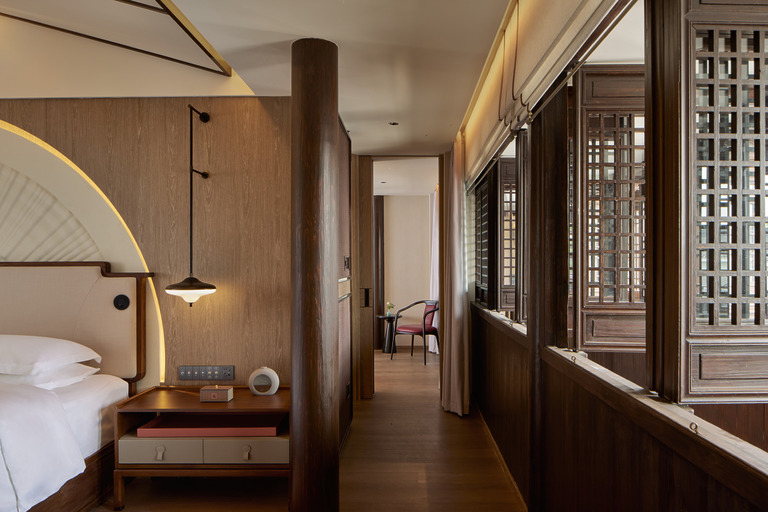
- Trends
Interior Design Trends 2026: Authenticity, resonance, and resilience.
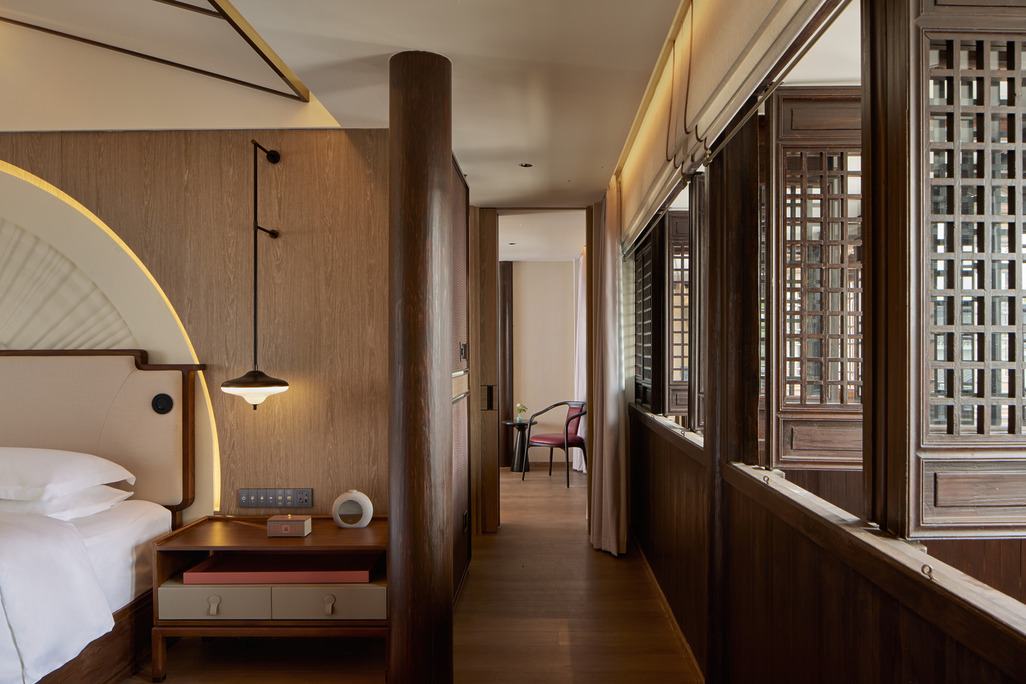
- Trends
